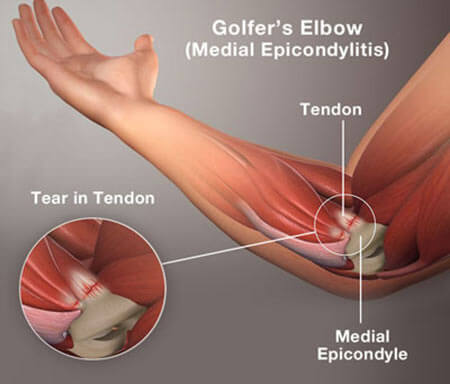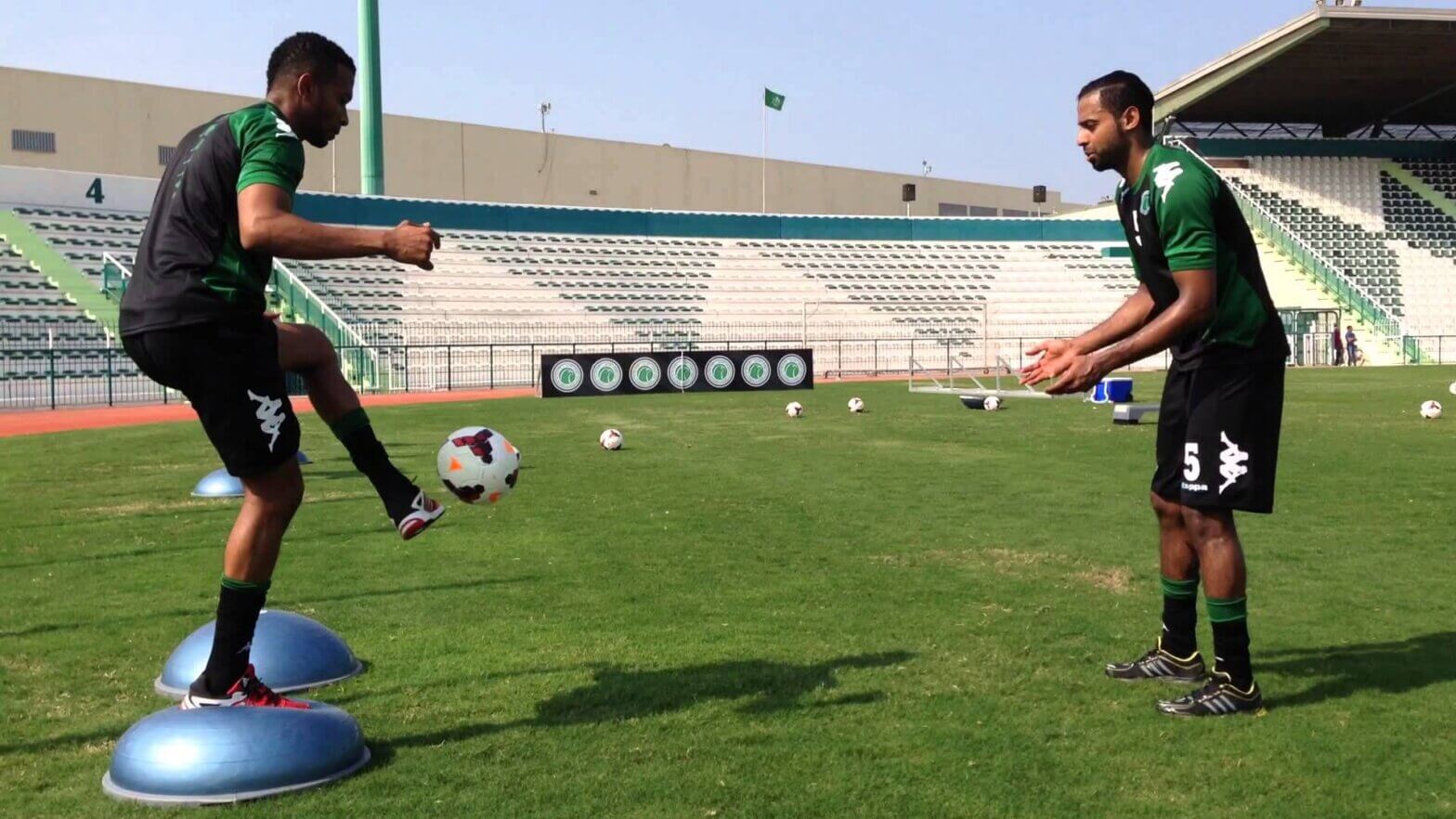Medial epicondylitis (commonly known as golfer’s elbow or thrower’s elbow) is a condition that develops when the tendons on the inside of the forearm become irritated, inflamed, and painful due to repetitive use of the hand, wrist, forearm and elbow. Golfer’s elbow is a form of tendinitis that affects the inner part of the elbow.
What is Medial Epicondylitis (Golfer’s Elbow)?

Medial epicondylitis is a condition that occurs when the tendons on the inside of the forearm become irritated, inflamed, and painful due to repetitive use of the hand, wrist, and forearm. A tendon is a soft tissue that attaches a muscle to a bone. The group of muscles affected by medial epicondylitis are those that function to flex (bend) the wrist, fingers, and thumb and pronate (rotate palm-down) the wrist and forearm. The muscle group comes together into a common sheath and attaches to the humerus bone of the upper arm. This bony prominence, called the medial epicondyle, is located along the inside of the elbow. Pain occurs on or near the medial epicondyle, at the area where the tendon connects to the bone. Repetitive forces can cause the tendon to become tender and irritated, and without treatment, can cause it to even tear away from the bone. In addition, as the muscle groups travel across both the elbow and the wrist, they function to stabilize at the elbow allowing for wrist movement.
Common Symptoms of Medial Epicondylitis?
Individuals with medial epicondylitis may experience:
- Pain along the inside of the forearm with wrist, hand, or elbow movements
- Pain or numbness and tingling that radiates from the inside of the elbow down into the hand and fingers, with gripping or squeezing movements
- Tenderness to touch and swelling along the inside of the forearm
- Weakness in the hand and forearm when attempting to grip objects
- Elbow stiffness
How Can a Physical Therapist Help?
It is important to get proper treatment for medial epicondylitis as soon as it occurs, as tendons do not have a good blood supply. An inflamed tendon that is not treated can begin to tear, causing a more serious condition. When a diagnosis of medial epicondylitis is made, you will work with your physical therapist to devise a treatment plan that is specific to your condition and goals. Your individual treatment program may include:
- Pain Management
- Manual Therapy
- Range-of-Motion Exercises
- Strengthening Exercises
- Patient Education
- Functional Training
Can This Injury or Condition Be Prevented?
Understanding the risk of injury and being aware of your daily movements can help prevent the development of medial epicondylitis. Individuals should:
- Maintain proper form and technique when performing repetitive work tasks or sports movements, like golf swings
- Maintain shoulder, forearm, and wrist muscle strength
- Perform gentle forearm muscle stretches before and after performing tasks
- Use proper posture and body mechanics when lifting heavy objects to reduce joint strain
- Seek Medical Professional help right away if you notice any of the above symptoms
If you believe you have Medial Epicondylitis or if your elbow pain is limiting your daily activities, Call Respire Physical Therapy at 703-671-1871 to schedule an evaluation today!
Tags: golfer elbow, elbow pain, medial epicondylitis, hand pain, Physical Therapy, physical therapist, tendonitis, Elbow Tendonitis, falls church, golfing



